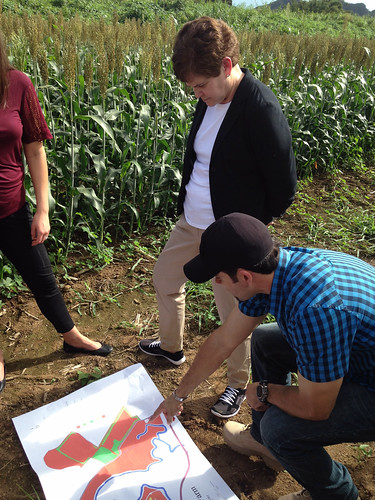
The Commonwealth of Puerto Rico is only 100 miles long by 35 miles wide. The small island is full of natural wonders, rich culture and bountiful agriculture. Yet few realize that much of the food eaten by residents and visitors alike comes from other places. Earlier this month, Puerto Rico Agriculture Secretary Dr. Myrna Comas Pagan made a visit to the USDA. She came to explore ways that my agency, the Agricultural Marketing Service (AMS), and other agencies in the department can help improve the island’s local food system.
Although the value of Puerto Rico’s agricultural production has reached $919 million, a 14 percent increase over the last two years, there is a lack of a distribution system for local produce on the island. The local agriculture sector is growing, supporting 6,500 jobs, but more still needs to happen. Puerto Rico imports food from 52 different countries which can leave the food system vulnerable. A recent event highlighted this point when a Puerto-Rico bound cargo ship was lost in a hurricane, costing the lives of the crew, but also resulting in the loss of 70 containers of food.
USDA Deputy Secretary Krysta Harden explained that the designation of Puerto Rico as a StrikeForce area will bring a cross-agency focus. “Bundling and leveraging resources will build on previous efforts by USDA agencies including the Agricultural Marketing Service (AMS), Food and Nutrition Service (FNS) and the Natural Resources Conservation Service (NRCS),” said Harden.
AMS Transportation and Marketing Program Deputy Administrator Arthur Neal highlighted how the agency provides critical support to farmers markets, food hubs, and local food businesses through technical assistance, research, and grants. Farmers markets are critical components of the local and regional food systems that play a key role in increasing the availability of fresh, wholesome food.
He encouraged Secretary Comas Pagan to develop a plan to leverage local funds with Federal support through AMS grant programs like the Farmers Market and Local Food Promotion Program. He explained that other local food systems have been successful by working with municipalities so that every community could potentially have a farmers market in their area. Efforts are already under way. For example, AMS will translate the USDA’s Local Food Directories into Spanish which could help boost customer traffic and sales at Puerto Rico’s existing farmers markets. Marketing and Regulatory Programs Deputy Under Secretary Elvis Cordova pledged to arrange a webinar in Spanish to outline available grant programs and how to apply for them.
Increasing and improving local food systems and production will help improve access to fresh, healthy foods; and create jobs and marketing opportunities for local farmers and ranchers; and give young people on the island the added incentive to go into business. Secretary Vilsack and USDA have identified strengthening local food systems as one of the four pillars to rural economic development and job creation. Efforts to strengthen local food systems in Puerto Rico and throughout the rest of the country are coordinated through USDA's Know Your Farmer, Know Your Food Initiative.




